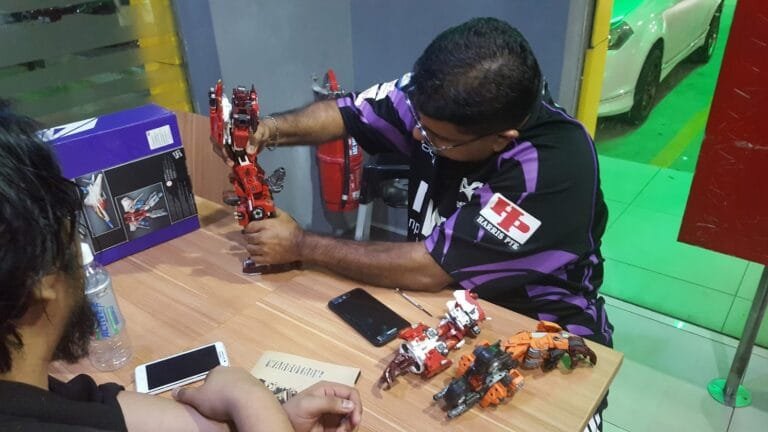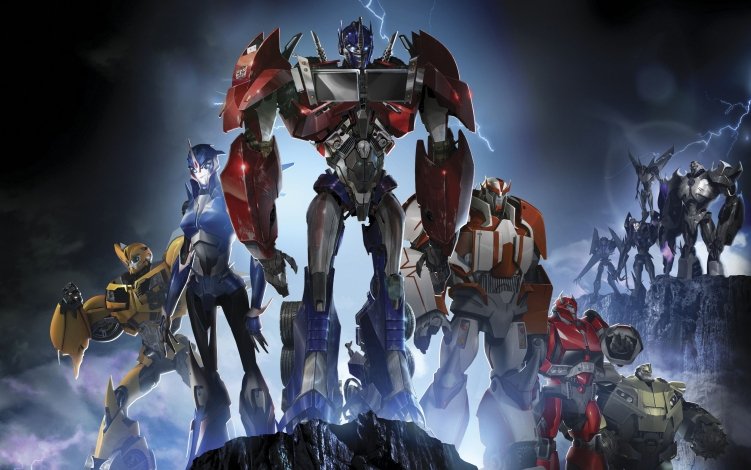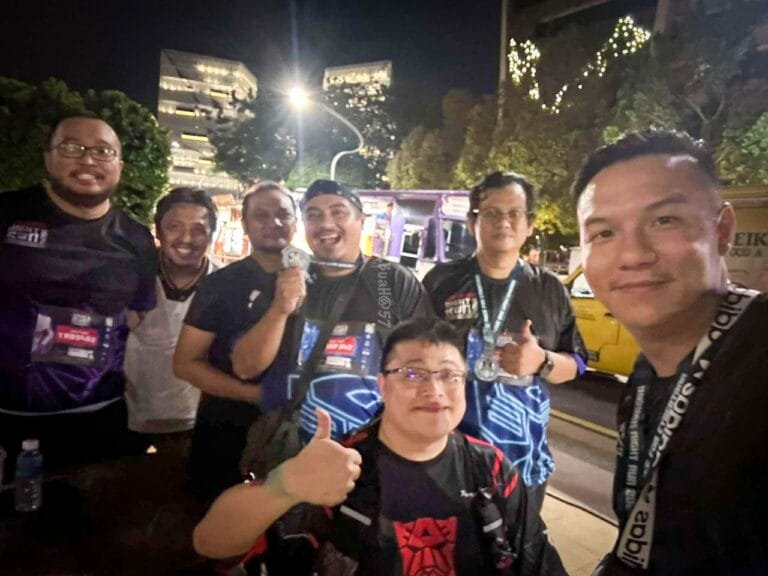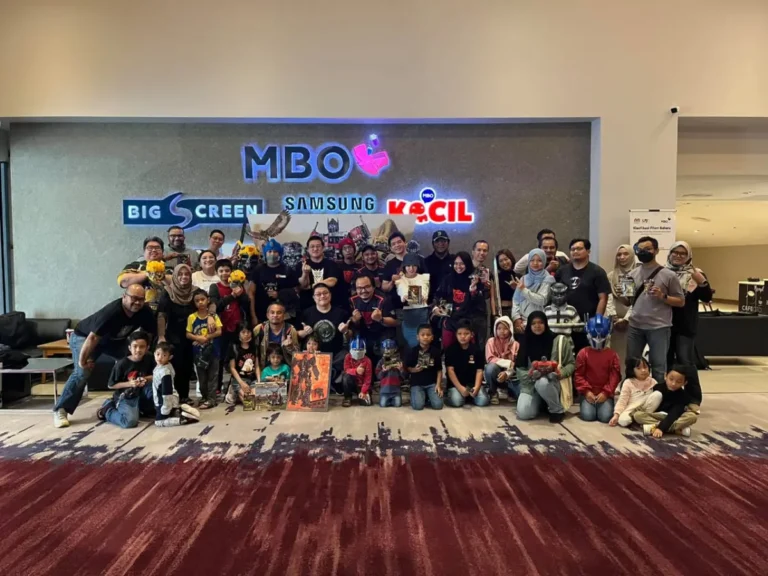
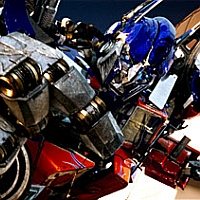 Creating monsters, building spaceships and zapping spots from Hollywood stars’ faces are all in a day’s work for Des Carey, who managed to get a job with George Lucas, after doing a degree in Sligo, writes JOE GRIFFIN.
Creating monsters, building spaceships and zapping spots from Hollywood stars’ faces are all in a day’s work for Des Carey, who managed to get a job with George Lucas, after doing a degree in Sligo, writes JOE GRIFFIN.
DES CAREY has made people invisible, helped create the ancient world of 300 and he had a hand in bringing Transformers to Earth. Films that the special-effects expert has been involved with have made billions of dollars and he’s worked with directors George Lucas, Zach Snyder and Michael Bay.
“It all started in secondary school,” says Carey, whose correct title is Digital Intermediate Producer and Visual Effects Supervisor.
“I always had a huge interest in art and physics and always wanted to get into special effects. The third-level course I did was only in its second year; it had model making, design and more. It was perfect.”
That course, Engineering and Industrial Design in Sligo IT, wasn’t specifically film-centred but Carey, who went there after going to St Michael’s College in Dublin, would recommend it for students considering work in film. “Absolutely, 100 per cent. I could not have picked a better course. I know there are other courses out there but I can safely say that it’s rare that I’ve met a person who’s studied just film or visual effects. It’s their love of film that has gotten them into that career. You’ve got to be a film buff and have a child-like love for movies.
“I graduated in ’94,” he says, “and I was hired by Lucasfilm later that year. It was purely through naivety and persistence. I managed to get a meeting with Star Wars producer Rick McCallum and George Lucas through a friend of a friend.
“I was very lucky but persistent. Nobody told me I couldn’t do it. My parents were very supportive.
“As a young kid, at 23, whether you realise it or not, your mind is a sponge. And I was able to capitalise on that. It was an incredible time to be in post-production. In the early 1990s it was an industrial revolution for digital filmmaking.”
EXPENSIVE EFFECTS
Some of the directors that Carey has worked with were very meticulous and hands-on with the visual effects. “There is no better director for shot composition than Michael Bay,” says Carey.
“He was disappointed in the box office of The Island and wanted to make sure that Transformers worked. That film was on a par with Jurassic Park with regards to revolutionary digital effects. Michael would sign off on every single shot in one theatre in LA. He was tireless. He wanted to make sure it was perfect.
“I think Transformers was one of the most anticipated movies of the year and pulled through from a VFX standpoint. Whatever you may think of it, the film made nearly a billion dollars worldwide. A lot of people liked it.”
NOT JUST MONSTERS
VFX experts like Carey are not, however, confined to shooting robots and monsters. Two of his highest-profile recent films are It’s Complicated and Get Him to the Greek – probably not the first titles to come to mind when you mention visual effects.
“That’s based on my wife saying I should work on smaller, more comedic stuff, what with my son getting a little bit older,” jokes the sci-fi and horror veteran.
“Those films sometimes entail as much as large VFX movies do. The effects allow filmmakers and directors of photography to get away with more than they would. For example, I can re-light a scene, or change how a character looks or remove shadows from an actor’s face. Certain actors and actresses can have lines or zits taken out but I’m not saying which ones! You’d be surprised that about 500 or 600 VFX shots can be in a small movie like that.”
Digital post-production is also a handy tool for period movies, says Carey, who recently worked on Robert Redford’s forthcoming film about the Lincoln assassination.
“We removed electricity cables and satellite dishes from modern-day Savannah, Georgia, for The Conspirator . That’s something I take as part and parcel of my job.”
CAREER HIGHLIGHTS
It’s no surprise that the giant alien robots in Transformers were digitally created but another great challenge was making the robots look as if they were in the environment just as much as the humans were.
“On Transformers and 300 , when shooting background plates [scenery] I would take them and send them to the effects vendors and say, ‘Here is the world that these composites are going to live in, here is the colour-corrected background plate. I need to make sure the robots fit into this world’,” says Carey.
Visual effects often step in to rectify unforeseen practical problems. Carey worked on Where the Wild Things Are , which initially used animatronics (mechanical puppets) for the creatures’ heads, but shooting in Australia’s hot climate soon put paid to that idea.
“There were a number of possible directions and initially [the monsters] were going to be fully automated but over the course of the shooting they decided to make the bodies all practical while the heads were digitally rendered. It was something we pulled off very well. Every facial expression is digital.”
Carey says that compared to similar CG (computer generated) effects, such as rendering a character invisible, those on Where the Wild Things Are were very challenging.
“Invisibility is an easy element to replicate. It’s much harder with CG heads or something like that. If an element is invisible, there’s a clean plate without the actor in it, and there’s another possibility with the actor in a green-screen suit [a suit that can be transparent to cameras] as well as some reference for accuracy. With Where the Wild Things Are , you’re taking a digital element reacting [on screen] to those actors” and so the effects team is required to seamlessly blend in expressive, digitally rendered faces to the creatures’ moving bodies.
ALIENS AND WARRIORS
“I worked on the latter part of the Starship Troopers production,” says Carey. “I was still at George Lucas’s special effects company Industrial Light and Magic.
“I spent a bit of time with Phil Tippett [VFX pioneer and Academy Award winner for Return of the Jedi and Jurassic Park ]. And they needed an extra hand.
“Everyone working on it was so passionate. I was lining up shots and what was needed and running to the green-screen stage where spaceships were practical models.
“Tippett, like Ray Harryhausen, must be one of the greatest special-effects designers of all time. He used to head-up ILM’s creature shop. Starship Troopers was one of the last films to combine such practical and digital effects.”
“As a whole, 300 was the most technically challenging movie that I’ve ever worked on,” says Carey, of the special-effects-heavy warrior flick. “Zach Snyder’s visual style and what he wanted is something I haven’t seen before. Zach’s style is at the forefront of what he does. His relationship with the artists and actors is second to none. His style is very unique. When we were doing it, it was all shot on film, not digitally.
“A lot of the [postproduction] compositing was done in Australia. The art director and VFX supervisor were very hands-on as Zach was quite unproven in film at the time.
“He’s so passionate and collaborative and he’ll take it all in. It made 300 the movie it was. It was the movie we could have gotten so wrong but we got it so right. Every shot was a VFX shot. Everything we did was approved by Snyder. We’d do a final VFX shot and he’d re-cut it.
“A lot of the quick pan and slow-motion shots had to be completely rebuilt in the online edit.” Plus, he explains the complexity of building special effects between people in different parts of the world. “There were 20 VFX houses . . . Zach and the editor would sit down and rebuild the footage online. Dealing with 20 VFX houses on three continents, I’d have to send them colour references for consistency. A shot can completely fall apart if it doesn’t live in the same world.”
Common scientific errors in the movies
Explosions in space: there is no sound at all in space as it’s a vacuum. If you were standing beside the Death Star when it blew up, you’d not hear it
Breathing on alien planets: no planets found so far had an Earth-like atmosphere. Take that spacesuit helmet off and you would die quickly but nastily That almost every alien speaks English: the main problem wouldn’t be translating an alien language into English, but the meaning of the words. Can you imagine an alien translator trying to understand how a teen speaks in Cork, Dublin or Donegal?
That all aliens are humanoid: we look like we do because of countless evolutionary nudges, the environment, gravity and atmospheric conditions on Earth. Who know what aliens will look like?
A glossary of special effects terms
Non-linear editing for films and television postproduction is a modern editing method that allows random access, so users can go directly to the moment of footage without having to shuffle-forward or rewind. Think of it like scene selection on a DVD, except it can pinpoint the frame within the unedited footage. It also doesn’t damage film, like previous editing methods used to
Composites are digital special effects creations, and can be anything from the robots in Transformers to the faces in Where the Wild Things Are
Postproduction is the stage after the shoot, such as editing, digital effects or sound-dubbing. Postproduction compositing is the insertion of composites in the post-production stage
SFX is shorthand for special effects
-Irishtimes

